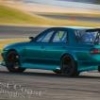Front Swaybar Troubles
Announcements
-
Similar Content
-
Latest Posts
-
as hydro lifters/ head will do 450kw no probs - went through many race engines at that power and 7.5 - 8 K rpm and the head was never the problem especially if a street car you not going to push it hard enough consistently enough either solid lifter conversion is big $$ not $600 - $800, do this and that and put em in I know someone doing nearly 800kw on poncams 😉 well a few tbh
-
When it was a turbo, or now that it is a V8? Engineering for turbo mods in Victoria would a breeze no? As in, you're not allowed to do anything, so there's nothing to engineer?
-
By Dose Pipe Sutututu · Posted
btw... here's a fun quote I got back in the day (using a NEO head and going shimless): a bit different initial requirement -
By Dose Pipe Sutututu · Posted
You can definitely do 450kW on the RB25 non-NEO head, plenty have. The $600 to $800 conversion will end up costing you much more I suspect, I believe you will require machining. NEO head has the lowest barrier to entry. My 2c? buy a BMW 😆 -
By Dose Pipe Sutututu · Posted
No more 90s JDMs for me, just want 4 door cars that won't attract cops. Wouldn't mind a Hako or a 240Z all motor but modernised (big comp, big cams, ABS, DBW, dis dat).
-






Recommended Posts
Create an account or sign in to comment
You need to be a member in order to leave a comment
Create an account
Sign up for a new account in our community. It's easy!
Register a new accountSign in
Already have an account? Sign in here.
Sign In Now